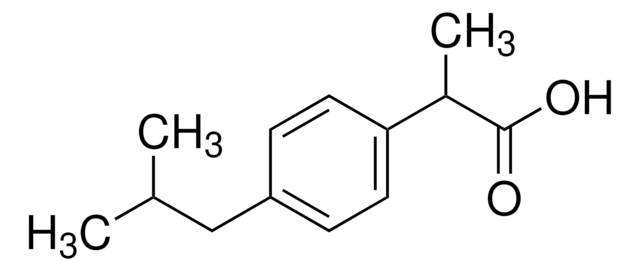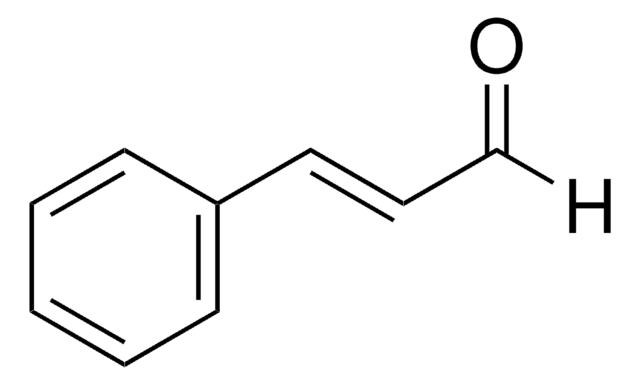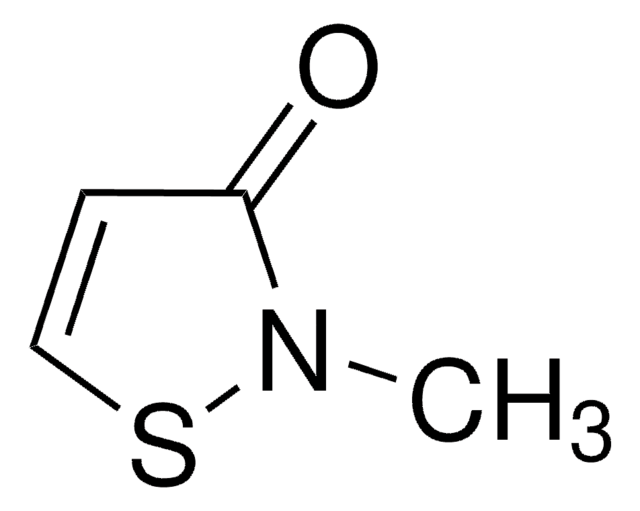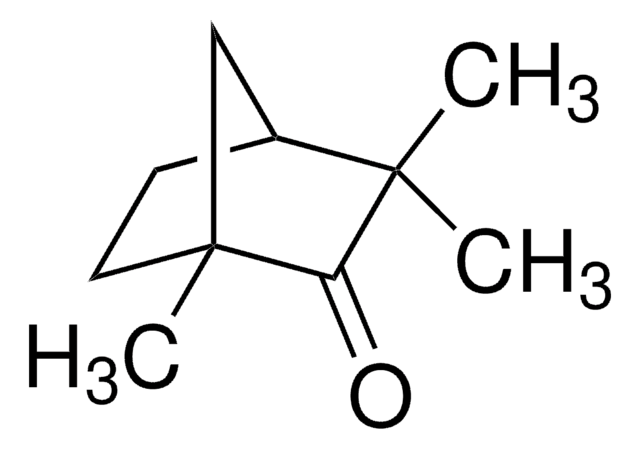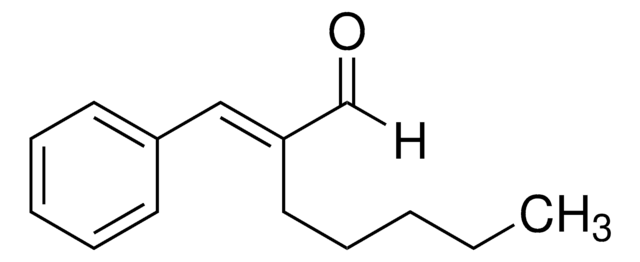Wichtige Dokumente
82934
7-Hydroxycitronellal
Odorant used in allergy studies
Synonym(e):
7-Hydroxy-3,7-dimethyl-octanal, Citronellalhydrat
About This Item
Empfohlene Produkte
Qualität
for molecular biology
Qualitätsniveau
Assay
≥95.0% (GC)
Form
powder
Dichte
0.92 g/mL at 20 °C (lit.)
Lagertemp.
room temp
SMILES String
[H]C(CC(C)CCCC(O)(C)C)=O
InChI
1S/C10H20O2/c1-9(6-8-11)5-4-7-10(2,3)12/h8-9,12H,4-7H2,1-3H3
InChIKey
WPFVBOQKRVRMJB-UHFFFAOYSA-N
Allgemeine Beschreibung
Anwendung
- contact sensitization studies to identify allergens present in cosmetic preparations
- elucidation of molecular pathways related to allergic reactions
- analytical standard
Signalwort
Warning
H-Sätze
Gefahreneinstufungen
Eye Irrit. 2 - Skin Irrit. 2 - Skin Sens. 1
Lagerklassenschlüssel
10 - Combustible liquids
WGK
WGK 1
Flammpunkt (°F)
Not applicable
Flammpunkt (°C)
Not applicable
Persönliche Schutzausrüstung
Eyeshields, Gloves, type ABEK (EN14387) respirator filter
Hier finden Sie alle aktuellen Versionen:
Besitzen Sie dieses Produkt bereits?
In der Dokumentenbibliothek finden Sie die Dokumentation zu den Produkten, die Sie kürzlich erworben haben.
Unser Team von Wissenschaftlern verfügt über Erfahrung in allen Forschungsbereichen einschließlich Life Science, Materialwissenschaften, chemischer Synthese, Chromatographie, Analytik und vielen mehr..
Setzen Sie sich mit dem technischen Dienst in Verbindung.
